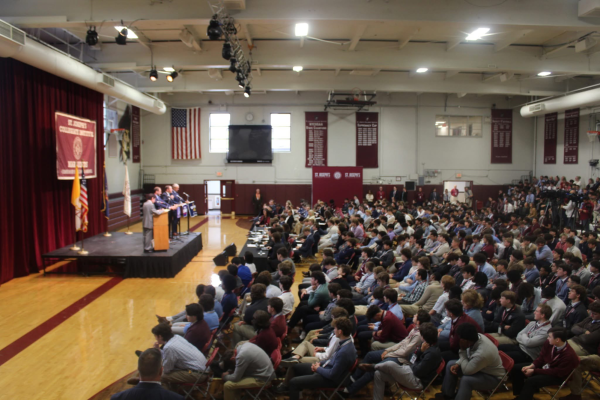EDITORIAL: A call for responsible spending as tuition increases
In 2011, Gov. Andrew Cuomo passed a five-year tuition increase plan that has been met with no apparent advantages for students. The legislation allots all 64 SUNY campuses the option to raise their respective tuitions $300 each year for in-state undergraduate students.
Last week, the SUNY board of trustees met in New York City for its annual approval vote, which corresponded to the fall 2014 semester. And like the three meetings prior, Buffalo State voted in favor of the tuition hike. If the trend continues, tuition will have been raised by $1,500 per student by the end of the five-year plan.
Cuomo’s justification for the passing of the plan was to create a “rational” tuition policy — one that will give Buffalo State students who reside in New York a predictable expectation of what their tuition will be. That’s his solution rather than continuing the possibility of erratic annual increases that could end up being more than $300. At the same time, it could also be less.
How about working harder toward eliminating the upping of college costs altogether? At the very least, specifically speaking to Buff State, how about some evidence of practical use of this extra capital?
Doing the conservative math, with roughly 12,000 undergrads on campus paying an additional $300 annually since fall 2011, that’s $10.8 million gained by Buffalo State thus far into the legislation. The tuition hike will ultimately raise $85-90 million across 64 SUNY campuses.
Now, the same question that has remained unanswered since the inception of the law: What, exactly, is all of this extra money Buffalo State acquires going toward?
If students are going to be squeezed for every penny, they should be receiving amenities that enhance their educational experience. Instead, the school has treated itself to extravagant expenditures like $10,000 Bengal statues. Surely, nobody stood in line on Black Friday to purchase the 12 beautiful, brand new LCD TVs that display menu items in the Student Union. Were print menus not doing the job?
All things considered, SUNY tuition is still relatively cheap in relation to its national counterparts. And, as a whole, we’re even beginning to see a slowdown in the rising cost of college, as reported by the College Board.
But it’s still not enough.
The burden of college costs are falling heavier than ever on students’ shoulders — student loans in the U.S. have surpassed credit card debt. And frankly, it’s insulting to see our tuition being jacked for such frivolous purposes while graduates struggle to pay off loans they’ve accrued while trying to better their lives.










